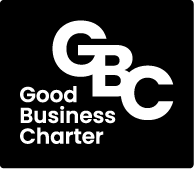
Equality, Diversity and Inclusion
Why Equality, Diversity and Inclusion Matter
A diverse, equal and inclusive culture is imperative for a business to continue to thrive because it puts its people at the heart of its operation. When people feel valued and included, they are more likely to flourish at work. More diverse teams lead to better business outcomes.
A more diverse workforce and inclusive workplace therefore improves customer orientation and service, innovation, productivity, profitability, morale and staff retention. It requires substantive measures to improve diversity, and data is an important factor against which to measure progress.
Our Stance on – CEO Pay Ratio
Under this component we also ask organisations with more than fifty workers to report their CEO pay ratio. This is a legal requirement for listed companies more than 250 workers, in recognition of the “widespread perception that executive pay has become increasingly disconnected from both the pay of ordinary working people and the underlying long-term performance of companies” (Corporate Governance Reform green paper) and that it contributes to public distrust and shareholder dissatisfaction.
Charities are well used to reporting the pay of their highest earners and the Good Business Charter believes that all private businesses with more than fifty workers, and listed businesses with 51-250 workers, should embrace the same level of transparency legally required of large, listed companies. See the High Pay Centre for more information on this and this Accounting Web article for ways to calculate it.
For partnerships, the CEO pay ratio would be calculated on the basis of the salary paid for taking the CEO role, not on drawings from the business.

